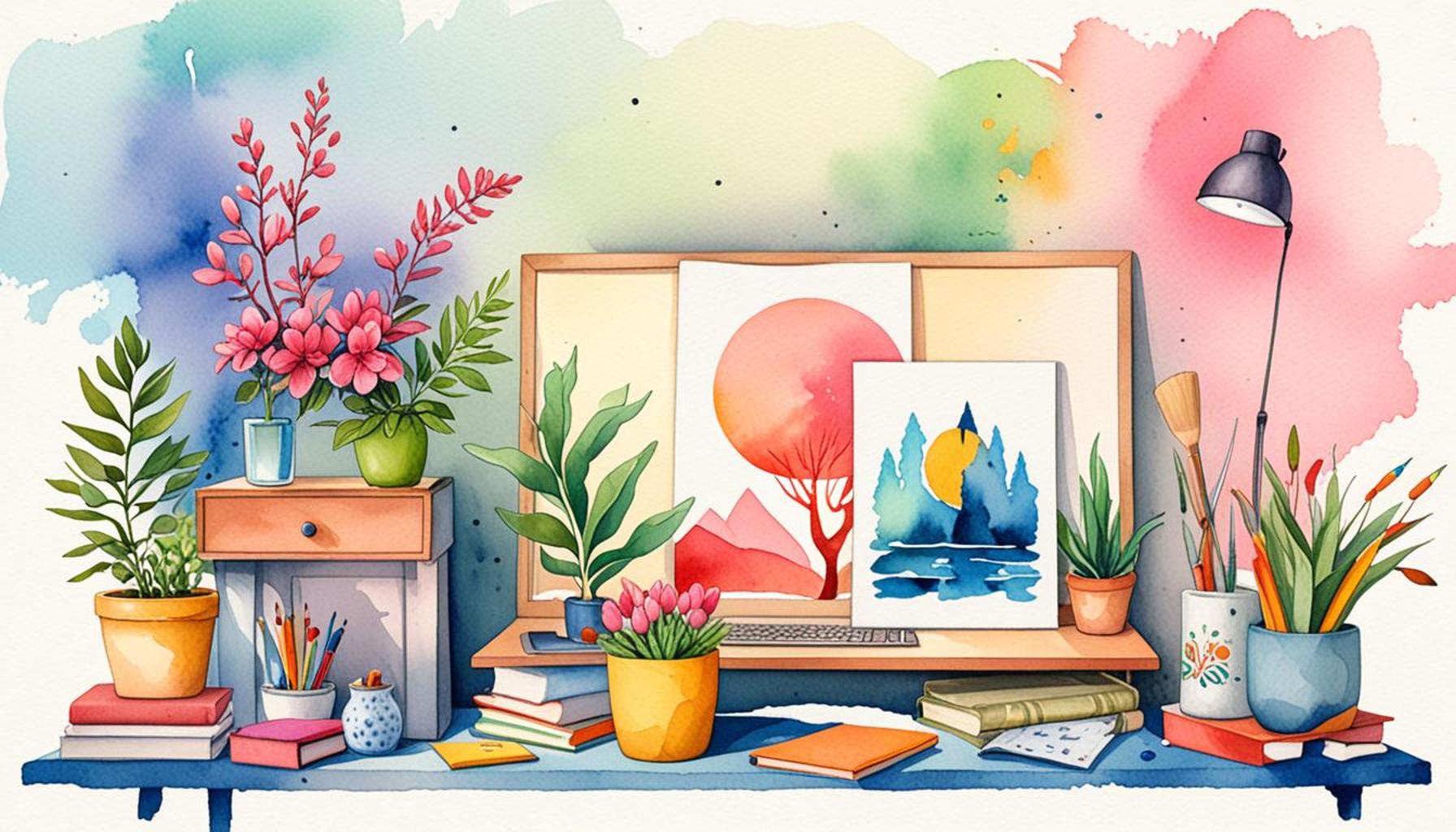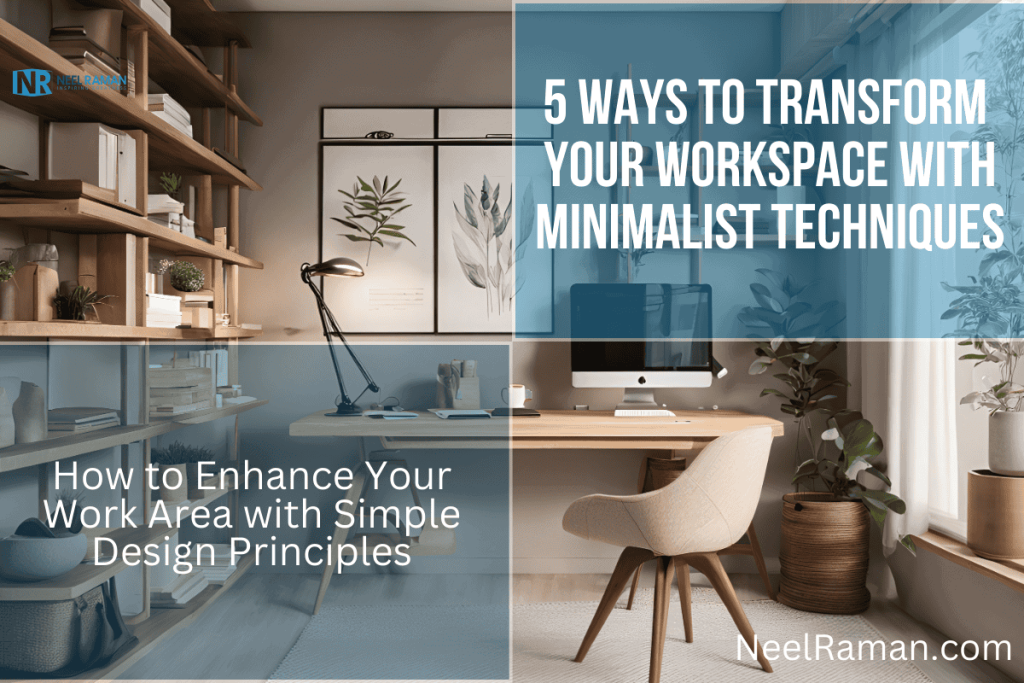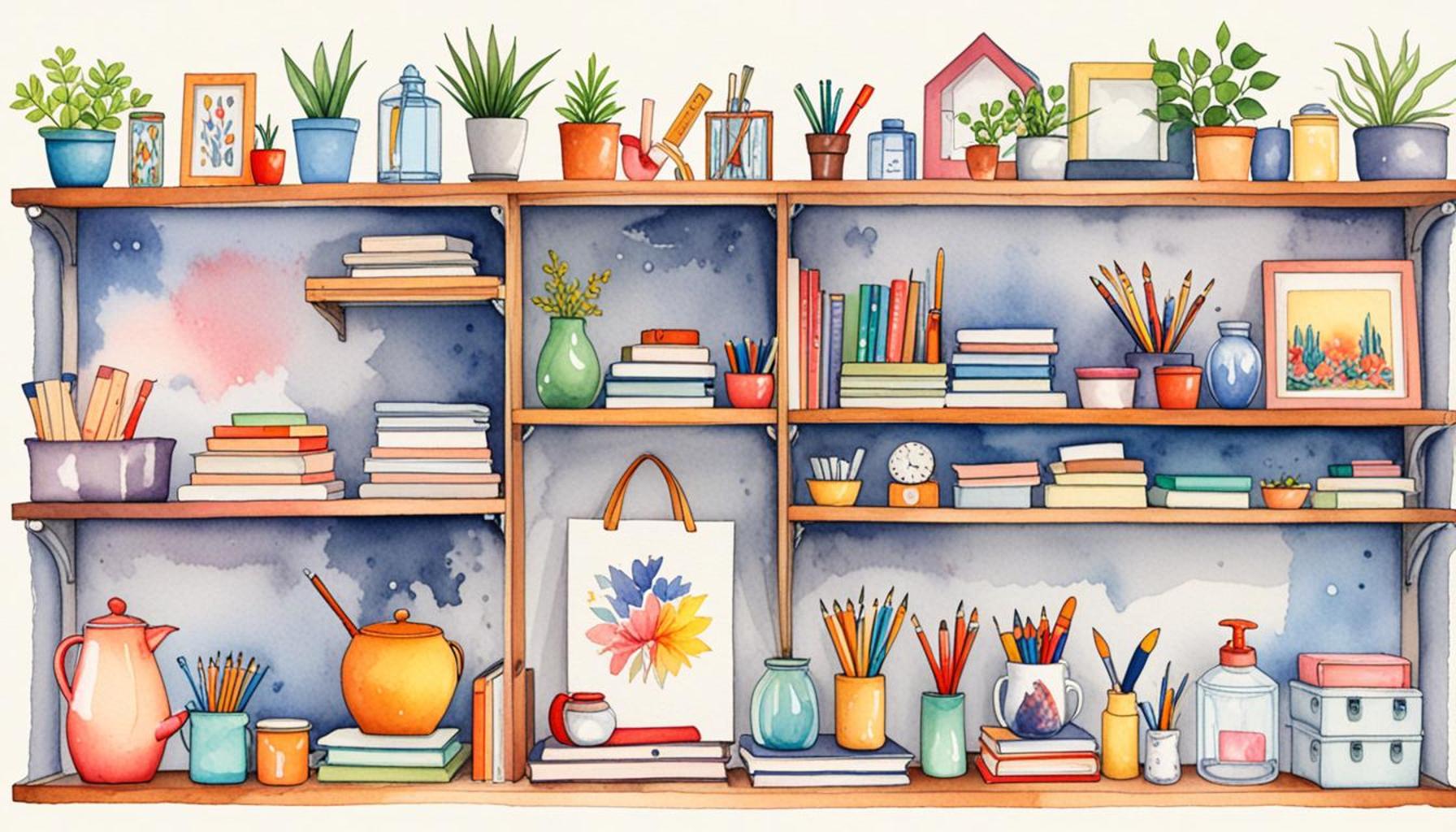Decluttering Strategies to Create a Calm and Inspiring Environment

An Organized Home Leads to a Calmer Mind
In a world where the pace of life seems to increase daily, having a cluttered environment can inadvertently contribute to heightened stress levels. When our surroundings are disorganized, the chaos can mirror itself in our thoughts, restricting our ability to think clearly and creatively. Embracing effective decluttering strategies can serve as a vital step toward transforming your personal space into a tranquil haven that inspires clarity and focus.
Have you ever reflected on how an organized home can positively impact your overall well-being? The implications of decluttering go beyond mere aesthetics and can enhance various aspects of life:
- Improved Focus: Reducing visual distractions allows for greater concentration on tasks, ultimately boosting productivity. For instance, a study from the Princeton University Neuroscience Institute found that a cluttered environment competes for your attention, thereby hindering your ability to focus on specific tasks.
- Enhanced Creativity: A tidy space fosters an environment that encourages creative thinking. The act of decluttering can free your mind from the constant barrage of distractions, allowing ideas to flow more freely. Artists, writers, and innovators often attribute their breakthroughs to organized spaces.
- Stress Reduction: A calm and organized area can significantly decrease feelings of anxiety. A study published in the journal “Personality and Social Psychology Bulletin” showed that individuals with more organized spaces reported higher levels of overall happiness. The physical act of decluttering can also provide a sense of accomplishment.
Initiating a decluttering project might seem daunting; however, breaking the task down into manageable steps can simplify the process immensely. Here’s a brief guide to get you started:
- Set Clear Goals: Identify specific areas that require your attention first. Whether it’s your kitchen, home office, or bedroom, knowing where to begin can help maintain focus.
- Establish a Schedule: Allocate dedicated time for decluttering sessions in your weekly routine. Consistency is key; even 15 minutes a day can yield significant results over time.
- Utilize Strategies: Explore various methods such as the KonMari Method, which encourages you to keep only items that “spark joy,” or the 4-Box Method, which categorizes belongings into four boxes: keep, donate, trash, and relocate. These strategies can streamline decision-making and enhance productivity.
By incorporating these decluttering strategies into your life, you can cultivate a home that not only looks appealing but also fosters a calm and inspiring atmosphere. Decluttering doesn’t just polish your living space; it also paves the way for improved mental clarity, creativity, and a greater sense of calm. By taking the time to organize, you essentially dedicate yourself to creating a nurturing environment that aligns with both your personal and professional aspirations.
DISCOVER MORE: Click here to learn how mindfulness can declutter your life

Practical Decluttering Techniques for a Serene Space
While the benefits of decluttering are abundantly clear, the process itself can sometimes feel overwhelming. Fortunately, adopting practical decluttering strategies can ease this transitional phase, allowing you to create a refined and inspiring environment. Here are some actionable techniques that can propel you on your decluttering journey:
- The One-In-One-Out Rule: This intuitive guideline helps maintain balance by ensuring that every time you bring a new item into your home, you remove another. This method is particularly useful in controlling the influx of possessions, prompting you to think critically about what you truly need and cherish.
- Declutter by Category, Not Room: Instead of tackling one room at a time, consider decluttering by category (e.g., clothing, books, kitchenware). This approach allows you to see the volume of items you own in a particular category, making it easier to decide what to keep and what to let go.
- Time-Bound Decluttering Sessions: Set a timer for 20 to 30 minutes, and focus solely on decluttering during that period. This time constraint can prevent you from becoming overwhelmed and encourages you to make quick decisions about your belongings.
- Visualize Your Ideal Space: Before diving into the decluttering process, take a moment to visualize how you want your space to look and feel. This mental image can serve as a motivation throughout the process and guide your decision-making. Understanding your vision provides clarity and focus as you sort through your belongings.
Incorporating these strategies not only makes the decluttering process manageable but also promotes a greater sense of accomplishment. It’s essential to remember that decluttering is not merely about throwing away items; it’s about intentionality and purpose. Each decision to keep or discard creates an opportunity to hone in on what truly brings value and joy to your life.
Once you’ve implemented these techniques, consider taking your decluttering efforts a step further by integrating organizational solutions that complement your newly organized space. The use of storage solutions like transparent bins, stylish baskets, or drawer dividers can aid in maintaining the organization for the long term. As you put these systems in place, remember to continually revisit your space and reassess your belongings over time to prevent clutter from accumulating again.
Undoubtedly, a systematic approach to decluttering can transform your home into a sanctuary—a place that nurtures not only your physical belongings but also your mental well-being. By understanding the significance of maintaining an organized environment, you lay the foundation for a calm and inspiring lifestyle.
Exploring Effective Decluttering Strategies
Creating a calm and inspiring environment requires more than just removing excess items; it involves understanding the impact of our surroundings on our mental well-being. By exploring various decluttering strategies, individuals can cultivate spaces that not only promote serenity but also inspire creativity. One essential approach to consider is the Four-Box Method. This strategy entails designating four boxes labeled “Keep,” “Donate,” “Trash,” and “Sell.” As you sort through your possessions, placing items into these categories helps in making informed decisions about what to retain and what to let go. This method not only streamlines the decluttering process but also encourages you to reflect on the true value of your belongings.Another beneficial strategy is the One In, One Out Rule. This principle dictates that for every new item brought into your home, an old item must be removed. This practice not only prevents clutter from accumulating but also promotes mindful consumption and reduces the tendency to hoard unnecessary items. By consistently applying this rule, you can maintain an organized space that fosters tranquility.Additionally, embracing a minimalist mindset can significantly shape your decluttering journey. Minimalism advocates for the appreciation of experiences over possessions, urging individuals to prioritize quality of life over material accumulation. By focusing on what truly matters, you can create an environment that reflects your values and promotes a sense of peace.Through these innovative techniques, decluttering evolves from a daunting task into a rewarding transformation of your living space. These strategies allow individuals to enjoy a harmonious home, ultimately leading to enhanced productivity, creativity, and overall happiness – making the process of decluttering a crucial endeavor in our journey toward a serene lifestyle.
| Category | Advantages |
|---|---|
| Four-Box Method | Facilitates decision-making and reduces overwhelm. |
| One In, One Out Rule | Promotes mindfulness and prevents clutter accumulation. |
| Minimalist Mindset | Encourages a focus on experiences and enhances well-being. |
By adopting these strategies, you can transform your environment, creating a haven that inspires productivity and tranquility.
DISCOVER MORE: Click here to delve deeper
Mindful Decluttering: Cultivating Awareness and Intention
As we further explore the journey of decluttering, it’s vital to recognize that this process transcends mere physical organization. It’s an opportunity to develop mindfulness around our possessions, creating a deeper sense of calm and inspiration in our surroundings. Consider these mindful strategies to enrich your decluttering process:
- Embrace Minimalism: In recent years, the minimalist lifestyle has gained popularity, promoting the idea that less is more. By intentionally selecting your belongings, you can create a space that fosters tranquility. Start by evaluating each item through the lens of usefulness and joy. If an object no longer serves a purpose or sparks happiness, it might be time to part ways.
- The 30-Day Minimalism Game: This fun challenge encourages participants to remove one item on the first day, two on the second, and so on, for thirty days. By the end, you will have discarded or donated a total of 465 items. This method not only instills discipline but also surprises many with how much they own, reinforcing the idea of intentional living.
- Digital Decluttering: Our digital spaces often become cluttered just as easily as our physical ones. Take time to organize your inbox, delete unused apps, and sanitize your digital files. This not only helps in reducing distractions but also promotes mental clarity. A clean virtual workspace can significantly impact your productivity and reduce stress.
- Mindfulness Practices: Engage in mindfulness or meditation before starting a decluttering session. Techniques such as deep breathing can help ground and center you, making it easier to focus on your intentions. This practice encourages a reflective mindset, enabling you to better understand the emotional attachments you may hold to certain objects.
Incorporating these mindful strategies into your decluttering process adds depth to each decision you make. By recognizing the emotional connections we have with our belongings, we cultivate a stronger sense of control over our environments, allowing us to curate spaces filled only with items that enrich our lives. Research indicates that maintaining a clutter-free environment can lead to decreased anxiety levels and improved focus. Hence, it becomes imperative to develop habits that foster long-term cleanliness and organization.
Moreover, the psychological benefits of decluttering go beyond immediate relief; engaging in these practices can enhance creativity and productivity. With fewer distractions, individuals often find themselves more inspired, enabling them to pursue hobbies and passions that may have once felt lost amidst the chaos of material possessions.
In the age of consumerism, actively minimizing our belongings can feel countercultural yet profoundly rewarding. Trendy apps designed to help users sell, donate, or recycle their unwanted items are also a great resource. Platforms like Poshmark or ThredUp even facilitate the decluttering process while allowing others to find new homes for those once-loved items. By leveraging these contemporary tools, you can extend the life of your belongings while simultaneously integrating sustainability into your decluttering practice.
Ultimately, a mindful approach to decluttering invites the possibility of an inspiring environment—a sacred space where calmness prevails, and creativity flourishes. Making the conscious choice to transform your surroundings is about more than just aesthetics; it’s about creating a life rich with intention and purpose.
DIVE DEEPER: Click here to discover more
Embracing a New Order for a Inspired Life
As we’ve explored the transformative decluttering strategies that pave the way for a calm and inspiring environment, it’s clear that the journey to a clearer space is intrinsically tied to our mental well-being and creativity. By consciously evaluating our possessions, we set the stage not just for cleaner living spaces, but also for clearer minds. The concept of mindful decluttering emphasizes the importance of awareness and intention in our actions, allowing us to foster emotional harmony with what we choose to keep.
Implementing minimalistic principles, engaging in challenges like the 30-Day Minimalism Game, and tackling digital clutter are all practical steps that empower individuals to take control of their environments. Each item in our homes can either add to our daily joy or distract from it; understanding this dichotomy is crucial for cultivating a space that resonates with positivity and inspiration. Moreover, practices like mindfulness can facilitate a deeper connection to our belongings, guiding us through the often-difficult process of letting go.
In a society that often celebrates abundance, choosing to adopt a minimalist mindset can seem revolutionary. However, it invites us to prioritize quality over quantity—offering not just a sense of relief from physical clutter but enhancing our overall mental clarity and focus. As you embark on or continue this decluttering journey, remember it’s not just about emptying spaces; it’s about enriching your life.
Finally, consider sharing your decluttering experiences with others, whether through social media, community groups, or even the use of resale and donation platforms. These shared stories foster a culture of sustainability and mindfulness. When we approach decluttering not just as a task, but as a transformative lifestyle change, we unlock the potential for not only inspiring environments but inspiring lives.


